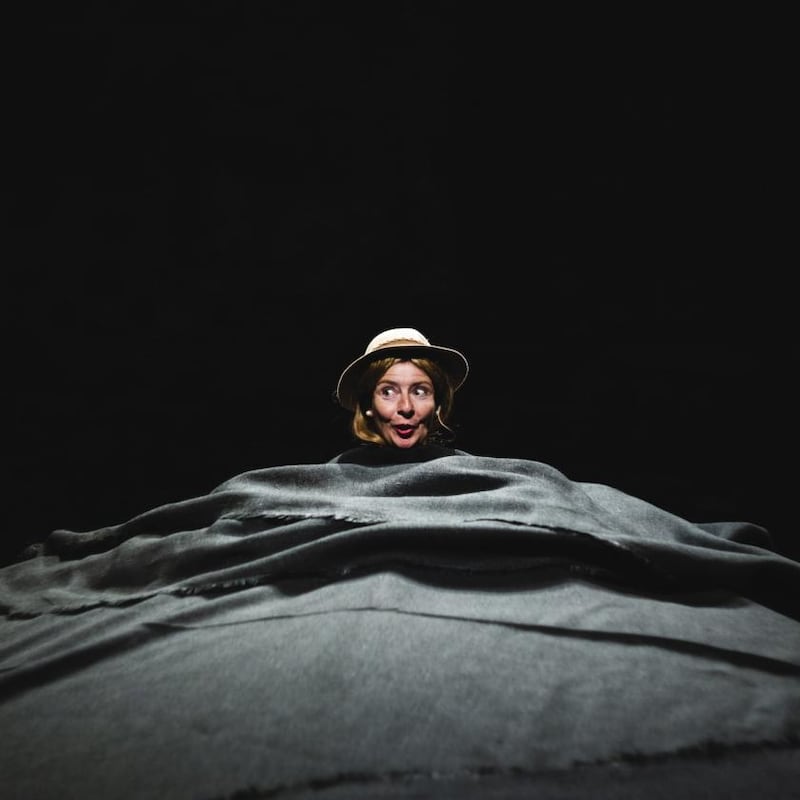HAPPY DAYS
The Factory Performance Space, Co Sligo ★★★☆☆
“Not a day goes by ... hardly a day, without some addition to one’s knowledge, however trifling.” So declares Samuel Beckett’s Winnie (Sandra O’Malley) in his 1961 play Happy Days, as she tries to take account of the passage of time, “to speak in the old style”. Immobilised by a mound of earth, her current existence is marked out by the bell for ringing and the bell for sleeping. Her daily ablutions, structured by the exercise of emptying and refilling her handbag, mark out the time in between. Even her utterances are structured by the logic of repetition: her insistence on welcoming “another happy day!”, her repeated pleas for Willie (John Carty) to acknowledge her. Yet with directed attention to her circuitous speeches over multiple productions, the play reveals itself differently every time. Not a performance goes by, we might say, without some addition to one’s knowledge about Beckett’s intentions.
In Niall Henry’s production for Blue Raincoat Theatre Company, Happy Days is stripped of much of its overt theatricality. O’Malley’s Winnie is performing more for herself than for the audience, despite her repeated insistence that “someone is listening to me still”. Designer Jamie Vartan buries her in a glittering tarmac mound, which sweeps out from her waist like a ballgown. With a loose cowl of pearls around her neck and a feathered fedora at a rakish angle on her head, she cuts the figure of a bohemian suffragette. At the start, O’Malley’s sonorous voice lends a school-marmish quality to Winnie, but her delivery softens as the play moves on.

In moments of stillness and silence, heightened by Henry from the cues of Beckett’s text, the hum of Barry McKinney’s “blaze of hellish light” is subtly enhanced by Joe Hunt’s sound design, which also uses the piercing ring of the bell to startle us out of any comfortable illusion. Unfortunately, the interval cuts through the sense of unease that Beckett creates so effectively in his counterpoint of word and image. At the end of act one, O’Malley climbs out of her earthen tomb and walks past the audience for the interval break, dispelling the intense brutality of Beckett’s vision, as well as the atmosphere so effectively created by the collaboration of the Blue Raincoat creative team. O’Malley has to work doubly hard to recapture our attention in act two, then, but she does it. By the time the closing moments descend, her performance is turned even further inwards, revealing the vulnerability underneath Winnie’s bravado. Until February 26th













